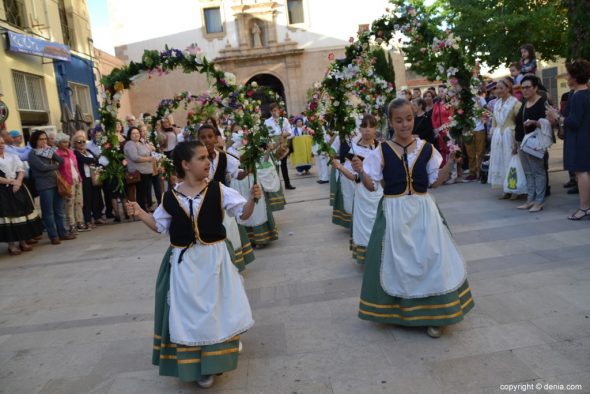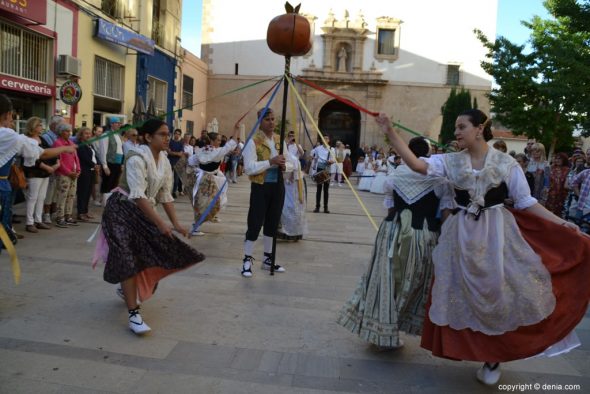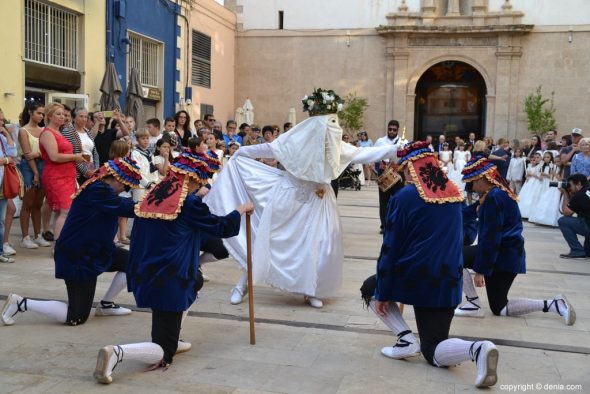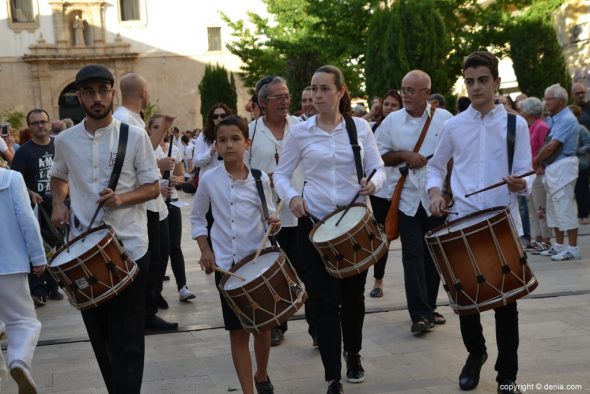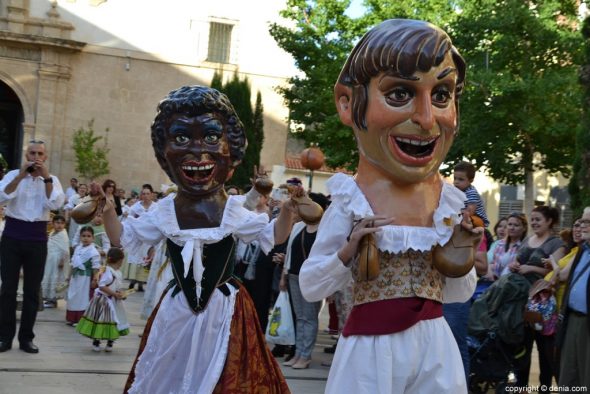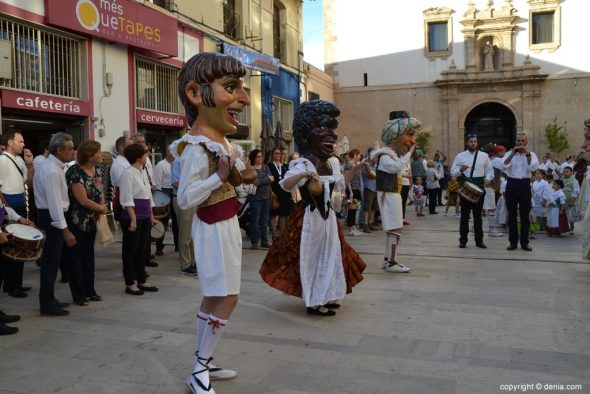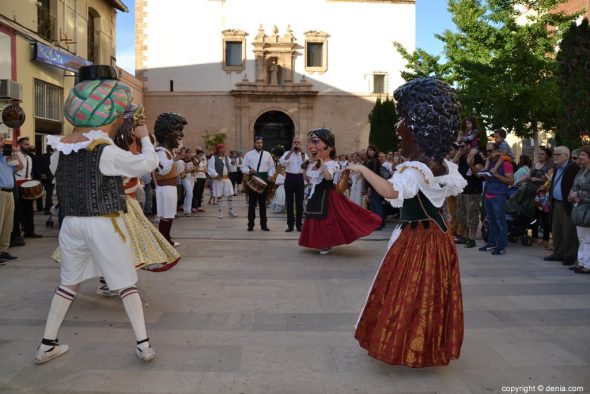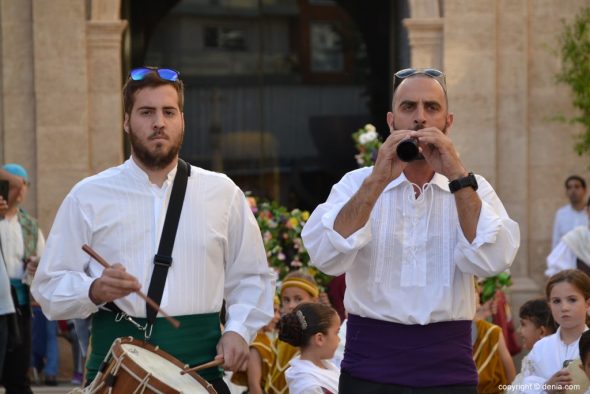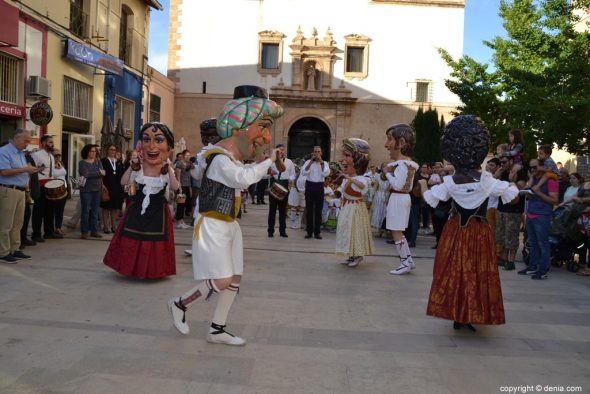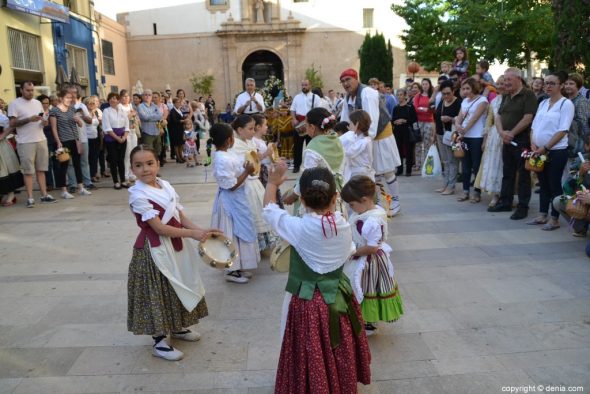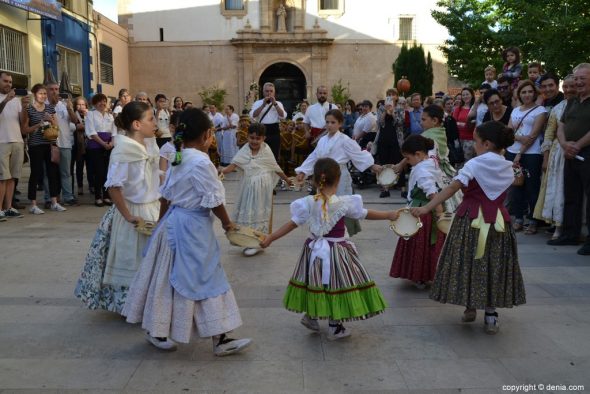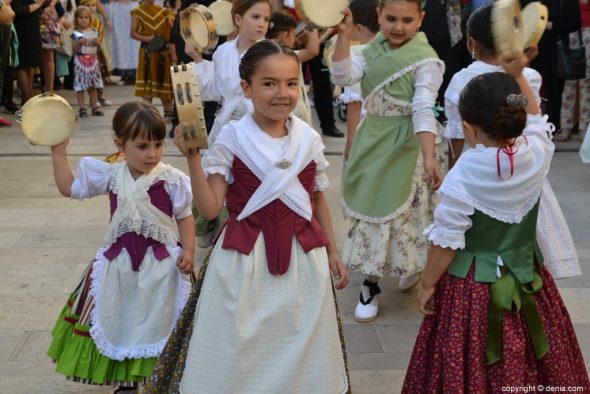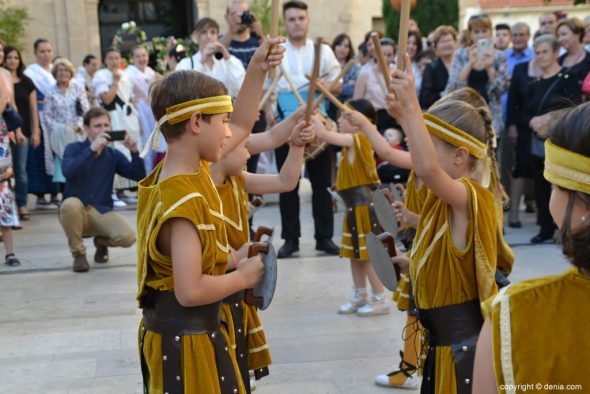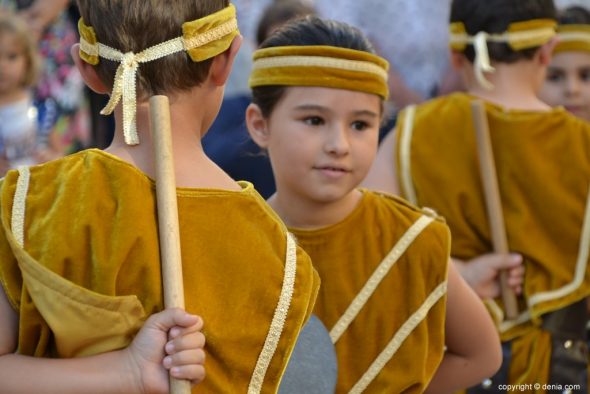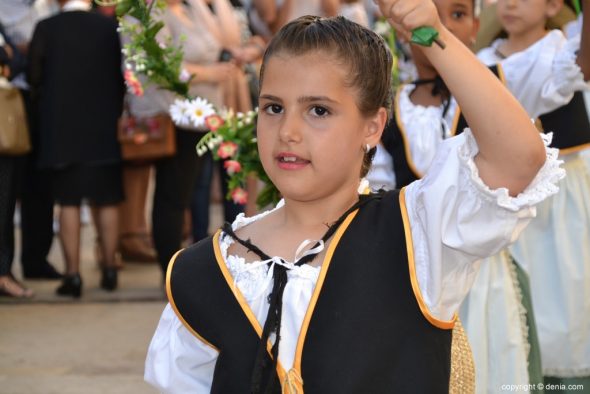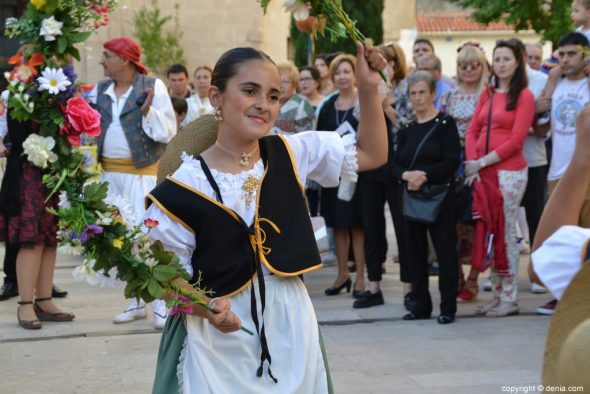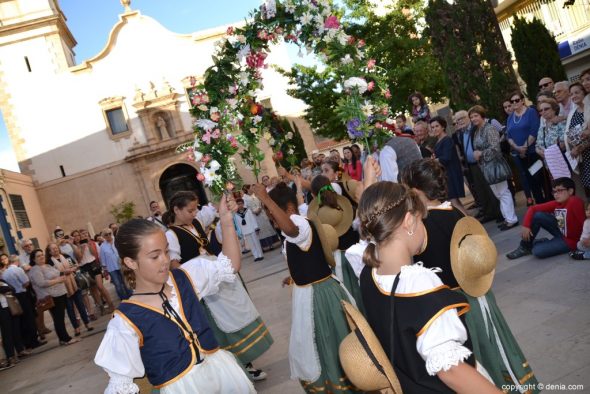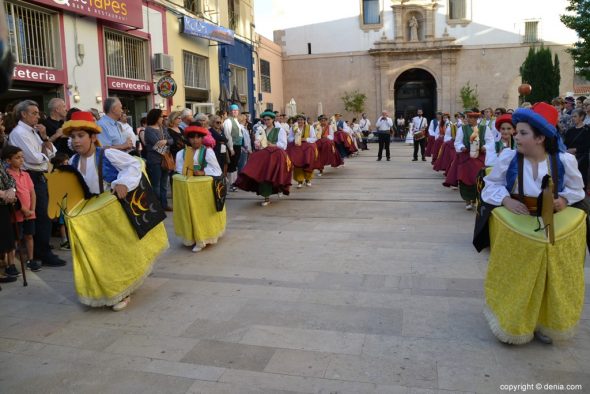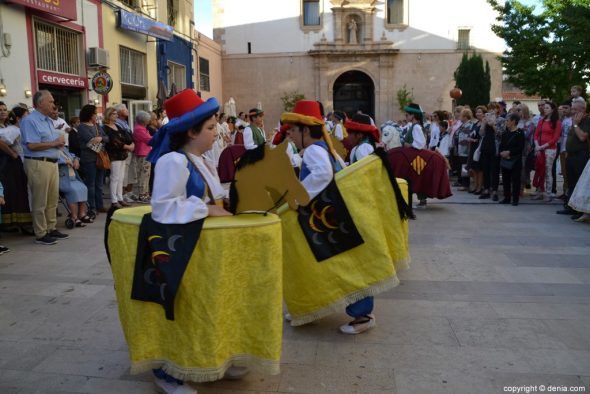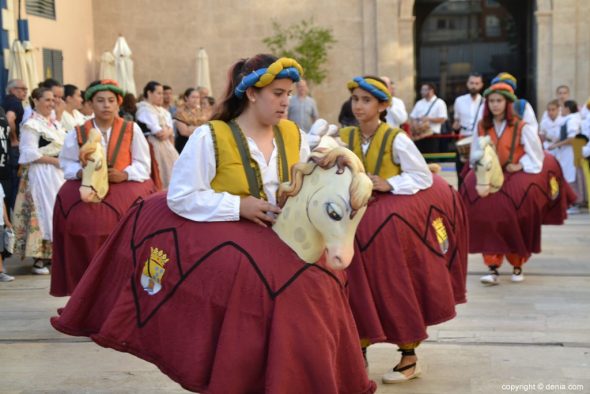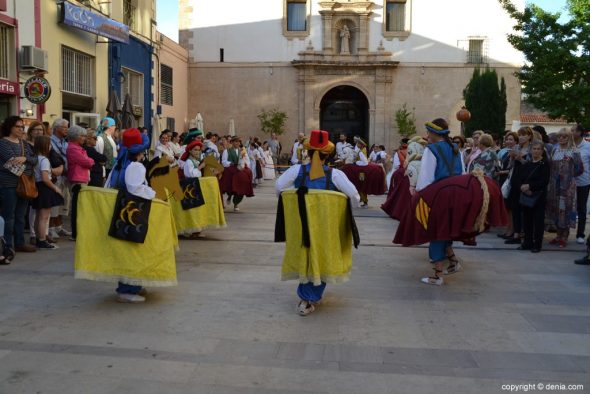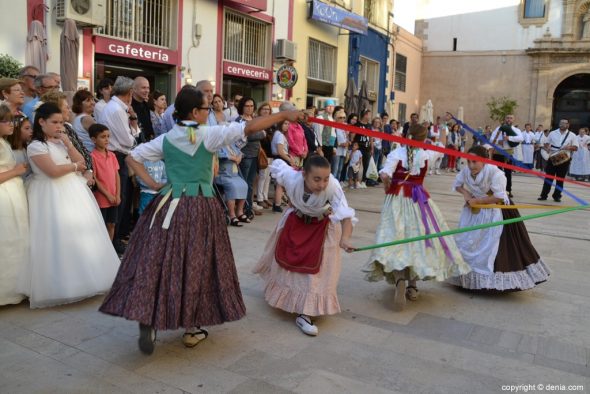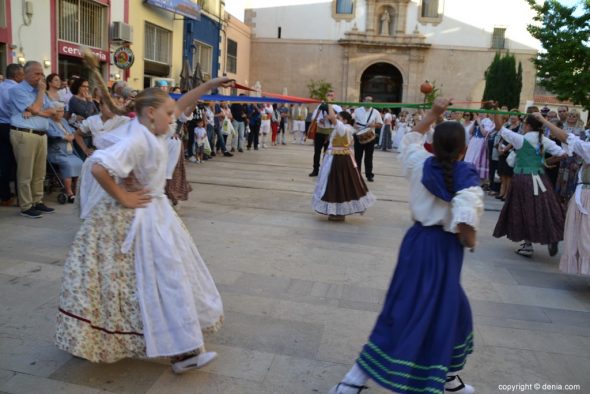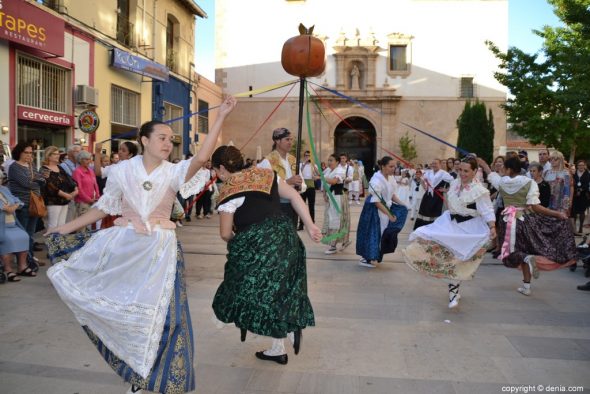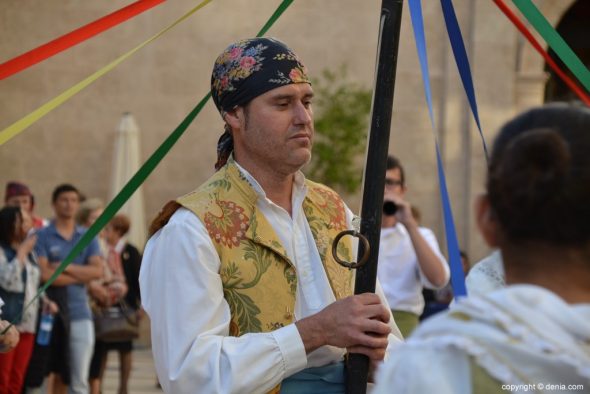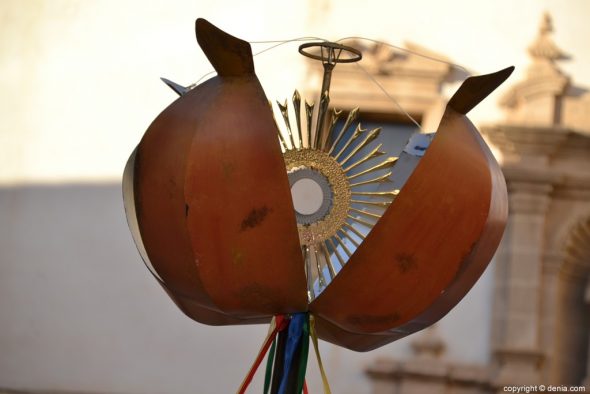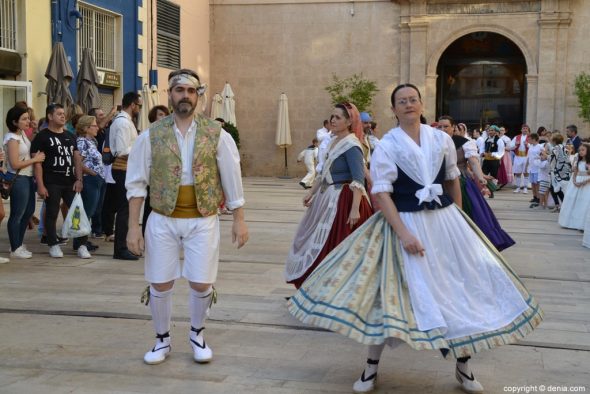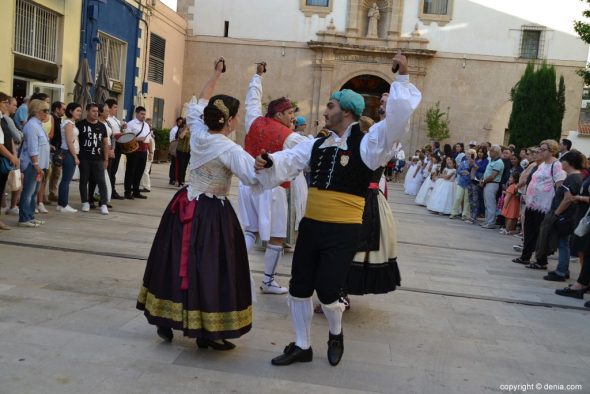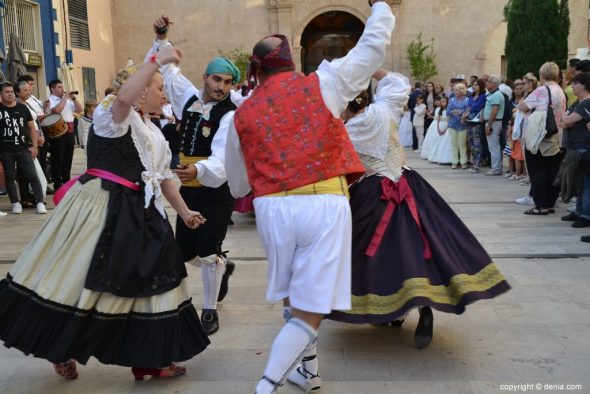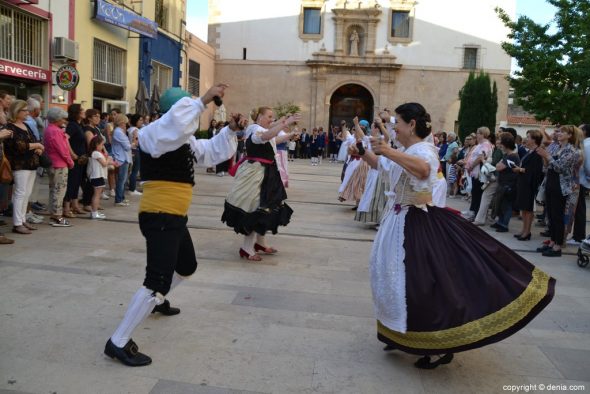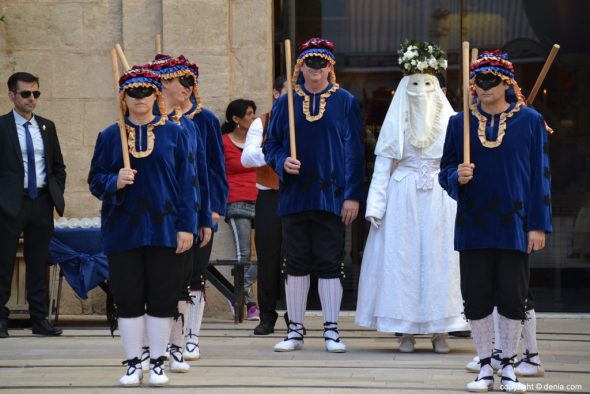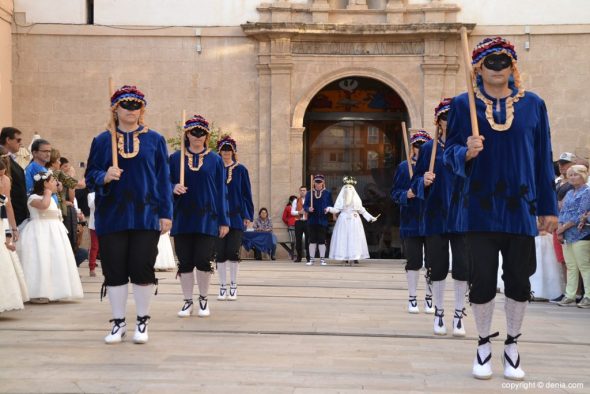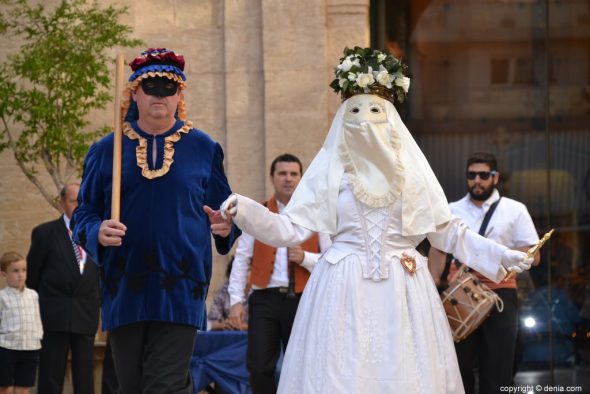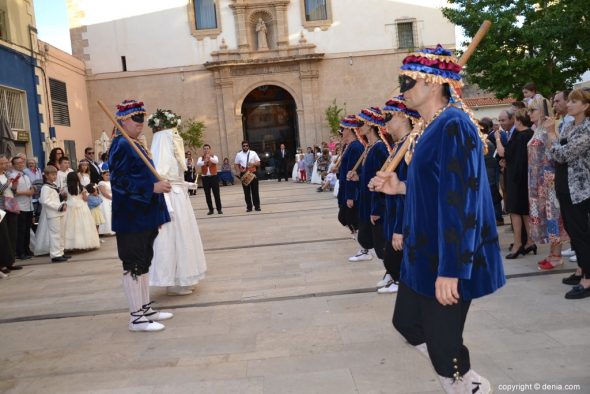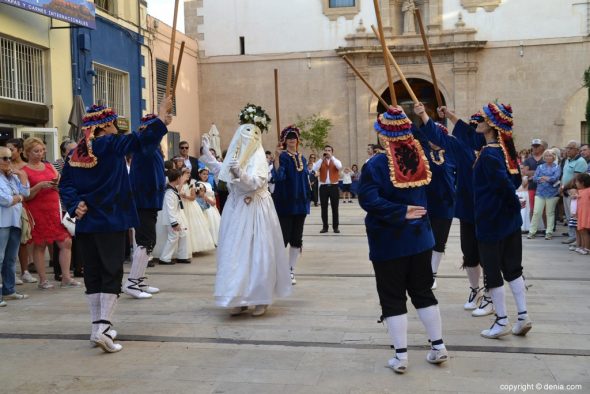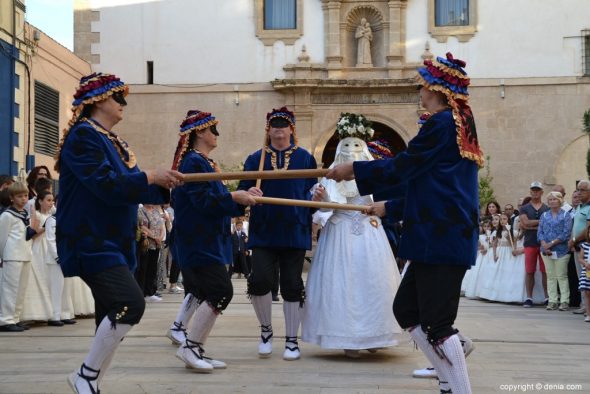Dianium Dansa and its large cast of dancers went out again on Sunday, 3 in June, to the street, to represent the traditional Corpus Balls. On this occasion the tour began in the Church of San Antonio and ended in the Church of the Assumption.
The one in charge of opening the parade was the dragon, which symbolizes Sant Jordi. After him, the first dance, the Dansà dels nanos or cabuts. The dancers are formed by couples of different ethnic groups that symbolize the cult of the Eucharist around the world. In addition, all of them sound great castanets that play in loose blows.
The parade continues with the Ball of Llauradors, in which small girls, dressed in the countryside, play their tambourines. After them, the Ball dels Palotets, a warrior dance in which the boys and girls blow their sticks and shields to the rhythm of the dolçaina and tabalet.
The following in dancing were the girls of the Dansa dels Arquets, a dance that symbolizes the joy of the peasants for participating in the Corpus Christi Festival.
With the multitudinous Dansa dels Cavallets the dancers form diverse figures on the backs of their horses, both Christians and Arabs. After them came the turn of the Dansa de les Vetes de Sueca, in which the colored ribbons and the figures created by the dancers are the protagonists.
Next, the role of Danza de la Magrana, in which the ribbons, which are born in a central stick, intertwine to finish opening the grenade that yields to the Eucharist.
The traditional Dansa de Dénia can not miss in this parade, a dance that has been introduced in the Balls of Corpus thanks to the efforts of a group of people from Baix la Mar. The dances that precede the Moma ended this year with the Dansà del Palomar.
The last to appear was the Moma, with the oldest and most representative dance, representing the struggle between good and evil. This dance is integrated by the Momos, the seven deadly sins, and the Moma, a man dressed in white that represents virtue carrying a scepter and a wreath of flowers.


